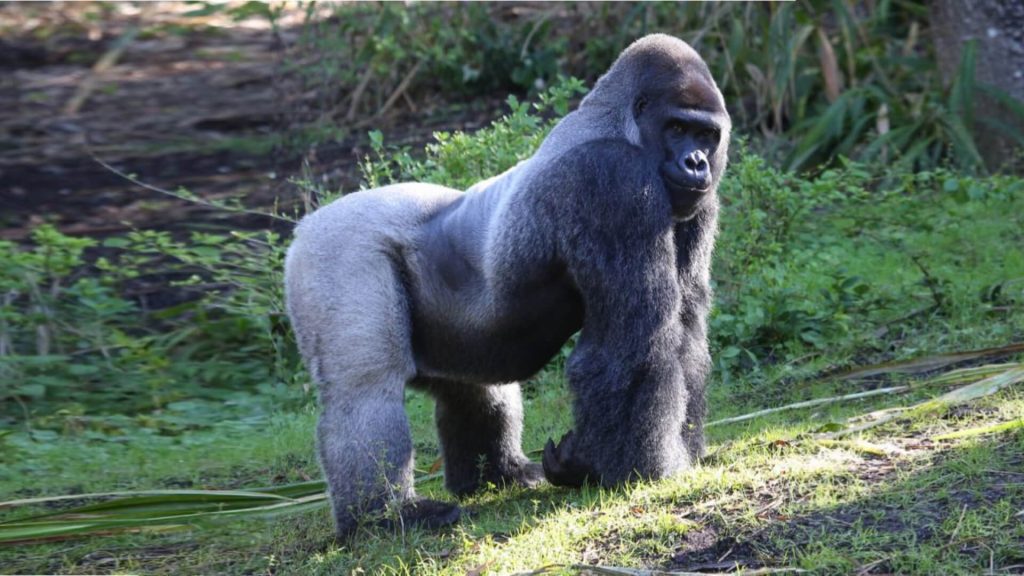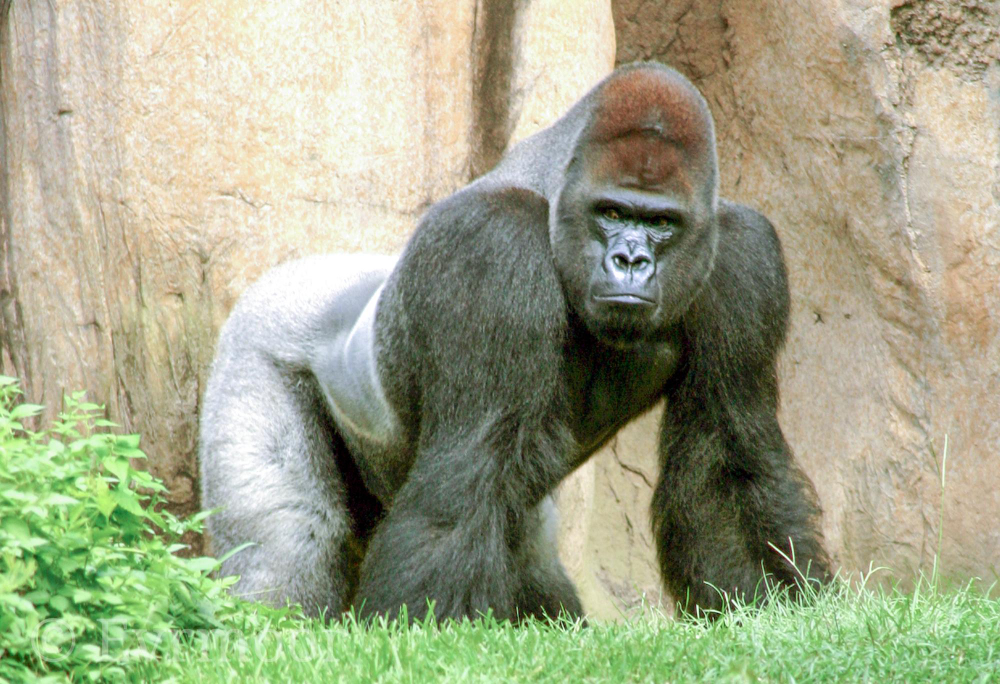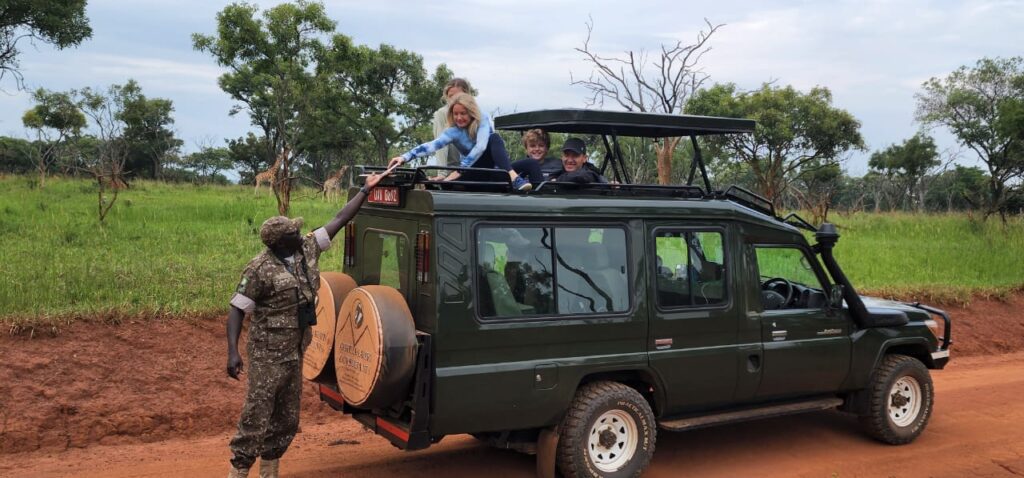Silverback Gorillas: Understanding the Leader of the Park
The silverback gorilla is a magnificent and powerful creature that has captivated the imagination of people around the world. Known for their distinctive silver-grey fur across their back and hips, silverback gorillas are mature, adult male gorillas, typically over the age of 12 years. They are the undisputed leaders of their family groups, responsible for the safety and well-being of the group members. This article delves into the fascinating world of silverback gorillas, exploring their role, behavior, and the challenges they face.
The Role of a Silverback Gorillas
Authority and Leadership:
The silverback is the central figure in the gorilla group’s social structure. He makes the major decisions such as when and where the group travels, eats, and rests over the course of the day. His leadership is vital for the group’s survival, offering guidance and protection.
Protector of the Group:
One of the primary roles of a silverback is to protect his group from threats. This includes defending them against rival male gorillas and other predators. When faced with danger, a silverback will display aggressive behaviors such as loud grunts, chest beating, and even physical confrontation to intimidate or fight off threats.

Behavioral Traits and Social Habits of Silverback Gorilla
Peaceful and Solitary:
Despite their formidable appearance and strength, silverback gorillas are generally peaceful creatures. They spend a significant amount of time feeding on vegetation and resting. Silverbacks also maintain order within the group, resolving conflicts and ensuring cohesion among members.
Family-Oriented:
Silverback gorillas are exceptionally caring and gentle with their offspring. They play a role in nurturing and sometimes even play with the younger gorillas. Their relationship with female gorillas is also crucial as they are responsible for mating and continuing the lineage of the group.
Challenges Facing Silverback Gorillas
Habitat Loss:
One of the most significant threats to silverback gorillas is the loss of their natural habitat. Deforestation for agriculture, illegal mining, and human settlement expansion have all reduced the spaces where these gorillas can live and thrive.
Poaching:
Despite legal protections, poaching remains a serious threat to silverback gorillas. They are often targeted for their body parts or captured to be sold illegally. Baby gorillas are particularly vulnerable, often poached to be sold as pets, a process during which silverbacks can be killed as they try to protect their group.
Conservation Efforts for Silverback Gorilla
Protected Areas and Wildlife Reserves:
Many conservation organizations and governments have established protected areas and wildlife reserves to safeguard gorilla habitats. These areas are critical for the survival of silverback gorillas and their groups, providing a safe haven from human threats.
Anti-Poaching Measures:
Efforts to combat poaching include patrolling, monitoring, and law enforcement in areas where gorillas live. Education and outreach programs are also crucial in reducing demand for illegally poached animals and their parts.
Community Involvement:
Involving local communities in conservation efforts has proven effective. By providing education and alternative sources of income, conservationists can reduce local reliance on the forest for resources and increase community support for gorilla protection.
Where to find Silverback Gorillas in East Africa?
Silverback gorillas, specifically the mountain gorillas, can be found in the dense rainforests of East Africa, primarily in Uganda, Rwanda, and the Democratic Republic of Congo. In Uganda, the Bwindi Impenetrable National Park and Mgahinga Gorilla National Park are renowned for their gorilla trekking experiences. Bwindi alone is home to roughly half of the world’s mountain gorilla population and offers various trekking routes that cater to different fitness levels. Mgahinga, part of the larger Virunga Conservation Area that spans across three countries, also provides opportunities to see these majestic primates in their natural habitat.
In Rwanda, the Volcanoes National Park is another prime location for gorilla trekking. This park is part of the same ecological region as Mgahinga and is known for its relatively accessible gorilla families. The conservation efforts here have been notably successful, making it a popular choice for those hoping to encounter silverback gorillas up close.
The Virunga National Park in the Democratic Republic of Congo also offers gorilla trekking experiences. Although political instability has affected tourism in the area, it remains one of the habitats for mountain gorillas. Each of these parks contributes significantly to the conservation of silverback gorillas, offering guided tours that not only provide a unique adventure but also help fund conservation initiatives.

How do silverback gorillas communicate?
Silverback gorillas have a sophisticated system of communication that involves a combination of vocalizations, body language, and even facial expressions. These forms of communication are crucial for maintaining social structure, expressing emotions, and coordinating group activities within their troops.
Vocalizations are perhaps the most distinctive aspect of gorilla communication. Silverbacks make a variety of sounds to convey different messages. For example, grunts and barks can be used to organize the group during travel or to alert them to the presence of danger. A deeper, more aggressive series of sounds known as “roars” or “screams” can signal alarm or defend against threats. Conversely, soft vocalizations like purring or humming occur during more peaceful interactions such as feeding or resting, serving to maintain calm and cohesion within the group.
Body language also plays a significant role. Silverbacks often use physical gestures, such as standing upright, thumping their chests, or making dramatic displays by uprooting vegetation and beating their chests to assert dominance or intimidate rivals or predators. These displays are powerful and are typically reserved for moments of heightened tension or competition.
Facial expressions are subtler but equally important. Changes in facial expression can communicate emotions ranging from contentment to agitation, helping to reinforce messages sent through sounds and gestures.
This complex communication system is essential for the survival of silverback gorillas, enabling them to lead and protect their groups effectively in the dense forests of Africa.
What do silverback gorillas eat?
Silverback gorillas primarily follow a herbivorous diet, consuming a wide range of plant materials to meet their nutritional needs. Their diet consists mainly of leaves, stems, and shoots, supplemented with fruits, which they enjoy when available. Bark and roots are also included, especially for their minerals and as a source of moisture during dry periods.
Although they predominantly eat vegetation, silverback gorillas occasionally consume small amounts of insects like termites or ants, adding protein to their diet. The composition of their diet can vary depending on the season and the specific region in which they live, adapting to the availability of different food sources in their forest habitats.
How big do silverback gorillas get?
Silverback gorillas are the largest of the primates, and their size is quite imposing. An adult male silverback gorilla typically weighs between 300 to 400 pounds (135 to 180 kilograms). In terms of height, when they stand upright on two legs, they can reach up to 6 feet (1.8 meters), though they more commonly move on all fours, which reduces their height to about 4 to 5 feet (1.2 to 1.5 meters) when measured from head to ground.
The breadth and muscle mass of silverbacks are significant, with broad chests and powerful arms, which are longer than their legs, aiding in both locomotion and foraging. Their size plays a crucial role in maintaining dominance within their group and deterring potential predators.
Lets get to the move to visit Silverback Gorillas

Embark on a journey of a lifetime with us and come face-to-face with the majestic mountain gorillas in their natural habitat. Our guided tours in the heart of Africa offer a unique opportunity to witness these magnificent creatures up close, an experience that only a few can claim. Led by experienced guides, our treks through lush rainforests not only promise enchanting encounters with silverback gorillas but also support crucial conservation efforts.
Whether you’re an avid wildlife enthusiast or seeking a profound adventure, booking a tour with us guarantees memories that will last forever. Join us to explore the beauty of the wild, connect with nature, and contribute to the preservation of these awe-inspiring animals.Secure your spot today and be part of this extraordinary adventure!